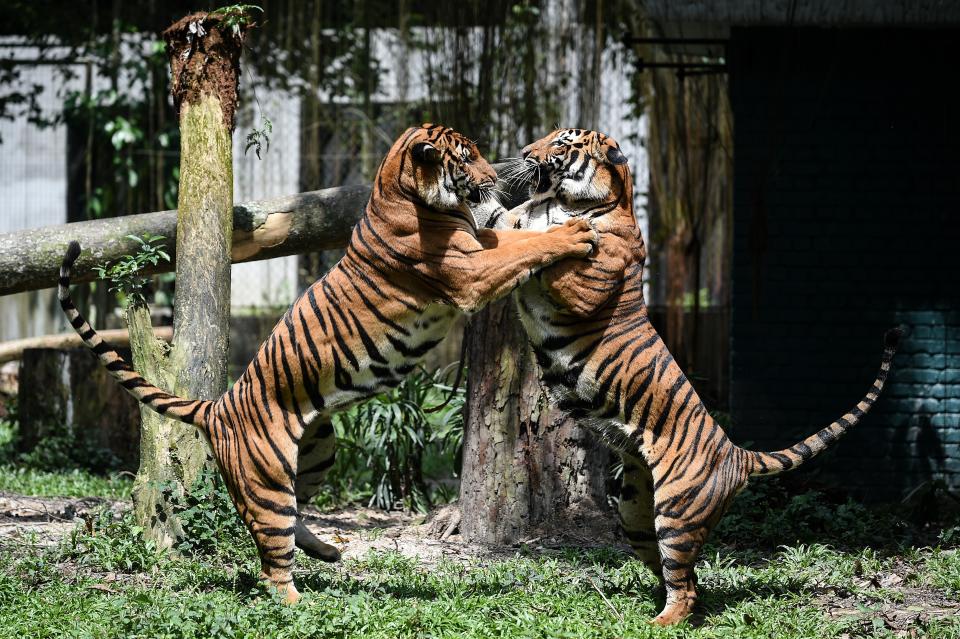Two ultra-rare Malayan tiger cubs born in Singapore, zoo announces

File Image: Two Malayan tigers fight at the National Zoo in Kuala Lumpur on 21 November 2017
(Getty Images)A wildlife reserve in Singapore welcomed a pair of Malayan tiger cubs, the first successful birth of the ultra-rare species in the forest reserve since 1998.
A native of peninsular Malaysia, the Malayan tiger faces extinction along with five other remaining sub-species of tigers around the world, and have been classified as critically endangered on International Union for Conservation of Nature.
The birth of the feline siblings at the Wildlife Reserves Singapore (WRS) is a significant addition to the population of the subspecies that is currently estimated to be 150, Dr Cheng Wen-Haur, the deputy CEO and chief life sciences officer for WRS, was quoted as saying by Channel News Asia.
The WRS team is closely monitoring the health of the cubs and the mother using closed-circuit cameras.
Last year, four wildlife parks across Singapore also welcomed close to 400 babies across 107 species, said WRS. Of these, about 29 species are listed under IUCN’s red list of endangered beings.
“A key goal of breeding wildlife in our parks is to achieve sustainable populations of species under human care,” said Dr Cheng. “These animals act as ambassadors for their wild counterparts, connecting people with wildlife and help us tell their story through community engagement and education.”
“Depending on species and circumstances, these zoo-born progenies may also serve as assurance colonies that could one day be used to strengthen wild populations,” Dr Cheng said.
Read More
‘A monster we left in the corner’: The endurance of Asia’s tiger trade and the new ‘Tiger Queens’

 Yahoo Finance
Yahoo Finance 